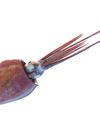
Whether it's the first responders to a radioactive detonation, radiographers conducting an X-ray examination or nuclear power plant workers, radiation-resistant garments can help prevent the harmful effects caused by radioactive substances through a process called irradiation. There are four major types of radiation: alpha, beta, neutron and electromagnetic. Each comes with its own health risks, from causing skin burns to mutating and damaging DNA, which can lead to the development of cancer.
Some radiation is easier to block than others. For example, alpha particles, such as those released from uranium, can be blocked by a piece of paper or your skin. But when those particles are inhaled through the nose, they can lead to lung cancer. Some electromagnetic waves, on the other hand, such as gamma rays, require thick layers of material such as lead to block them completely.
To prevent these types of radiation from entering and wreaking havoc on the human body, specialised hazardous materials suits are deployed. The term 'hazmat suit' is used to cover a range of protective gear. This may include suits designed to shield the wearer from biological hazards, chemical exposure and viruses, whereas others can be used to block particles of harmful radiation.
Esta historia es de la edición Issue 176 de How It Works UK.
Comience su prueba gratuita de Magzter GOLD de 7 días para acceder a miles de historias premium seleccionadas y a más de 9,000 revistas y periódicos.
Ya eres suscriptor ? Conectar
Esta historia es de la edición Issue 176 de How It Works UK.
Comience su prueba gratuita de Magzter GOLD de 7 días para acceder a miles de historias premium seleccionadas y a más de 9,000 revistas y periódicos.
Ya eres suscriptor? Conectar

INCREDIBLE SOLAR SYSTEM CRATERS
Why these spectacular craters carved out by past impact events are among the most widespread and distinctive geological features in the Solar System

HOW NORTH AMERICA'S GREAT LAKES FORMED
The world's largest freshwater system comprises five immense interconnected lakes, carved into Earth by glaciers

BUILDING THE WORLD'S DEEPEST CAR PARK
Australia's most famous landmark is often marvelled at from ground level, but its innovative spiral substructure is a hidden gem

FINDING THE COLOSSAL SQUID
This elusive creature spawned a legend of a deep-sea monster that endured for centuries

Octopuses burn more calories changing colour than you do on a 23 minute run
For octopuses, changing colour burns about as many calories as a human on a 23-minute run. Octopuses are masters of disguise, changing colour at the drop of a hat to startle predators and hide from prey.
The world's first silicon-anode battery could revolutionise electronic vehicles
A ceramic battery manufacturer has unveiled a solid-state battery concept that can be charged from 5 to 60 per cent capacity in just five minutes, giving future electric vehicles (EVS) a 186-mile range in the time it takes to order a coffee.

New technology gives AI the power to feel surfaces
Scientists have given artificial intelligence (AI) the capacity to 'feel' surfaces for the first time, opening up a new dimension for deploying the technology in the real world.

Visit Plane Earth 2125
How might our world have transformed under the strain of climate change 100 years from now?

The world's largest organism may have been growing for 80,000 years
Pando, an enormous quaking aspen that spans more than 40 hectares in Utah, is not only one of the largest known organisms on Earth, it's also one of the oldest.

Scientists detect the most powerful cosmic rays ever
Scientists have detected the most energetic cosmic rays ever discovered, and they're being produced by mysterious sources relatively close to Earth.